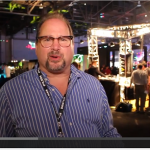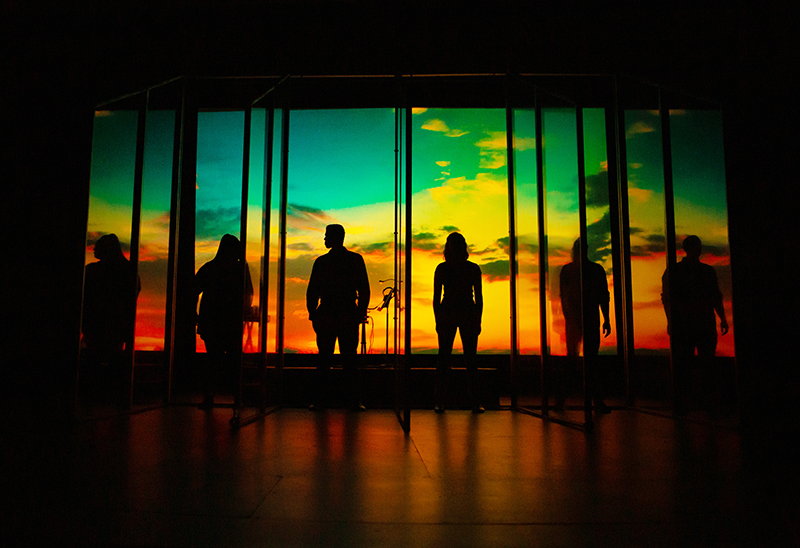
“We didn’t take the masks off until the actual videotaping started. It’s kind of like summer stock. You go in two days, you block it, you open.” —Bill English
Life for theatre people has been highly daunting in our pandemic world, but the San Francisco Playhouse has kept moving forward, staying active, and engaging their audience through online offerings. One such recent digital production was Songs for a New World, a show that originally debuted in 1995 and was the first work from Tony Award-winning playwright and composer Jason Robert Brown (Parade, Bridges Of Madison County). Residing between song cycle and musical, the show explores moments where people make crucial transitional decisions in their lives.
Staged with four actors separated by screens and a pianist situated in the background, the Playhouse production of Songs For a new World last December was presented as a series of musical vignettes. But it was not rehearsed nor staged conventionally due to heavy Covid restrictions in the Bay Area. The actors, conductor/pianist/musical director Dave Dobrusky, and the director first rehearsed together on Zoom for three weeks. Musical rehearsals were held individually with each singer along with group musical rehearsals where they would sing together.
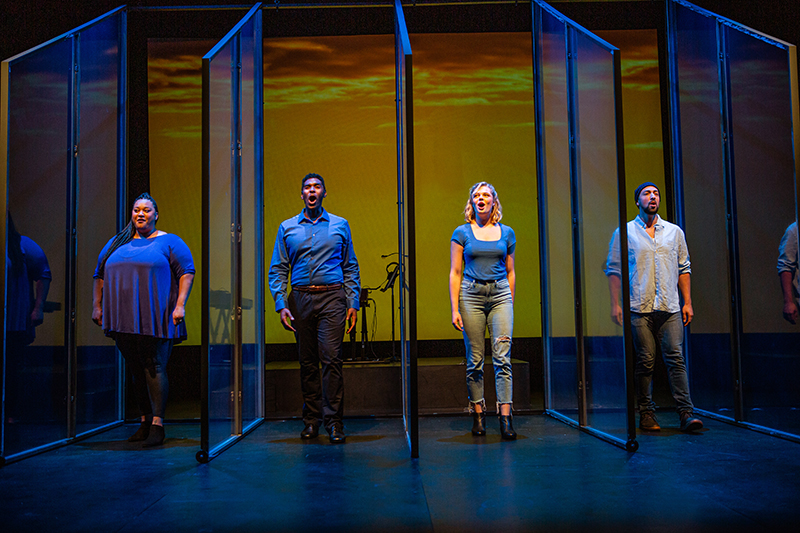
A “Very Challenging” Process
“It was difficult because there was no sync and hard for them to really feel the blend and the matching rhythms because they couldn’t really hear each other at the same time,” recalls the San Francisco Playhouse’s co-founder and artistic director Bill English, who directed the show. “It was a very challenging process because of that.” It was also tricky for him to show the cast how he wanted them to move on stage and work with props when they could not be in the physical space.
The team had two full days of audio recording, two full days of staging, and then two full days of video recording to complete the production. They had reserved a seventh day for more video recording but did not need it. Each scene was recorded on video three of four times, with the first one being a run through that allowed English and his director of photography Wolfgang Wachalovsky to confer about the choices they wanted to make for camera movements and what worked.
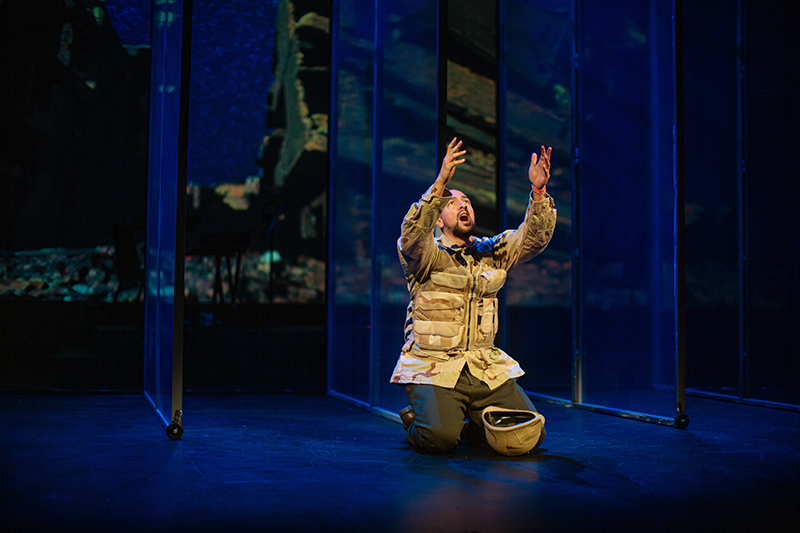
But first, the actors went into a recording studio for two days with Dobrusky — all separated in different locations but linked via direct video feed — and performed mostly to a pre-recorded piano track. After the recordings were made and the best takes selected, the actors went to the theater for two days of staging without cameras and rehearsing with the choreographer. Everyone wore masks, with the actors lip synching to themselves as they later would on camera. “We didn’t take the masks off until the actual videotaping started,” says English. “It’s kind of like summer stock. You go in two days, you block it, you open.”
The hinged screens separating the actors on the set had a steep rake on the top edge and ranged from 8 to 12 feet high. The screens were 48 inches apart when facing front, and they could fan out to be six feet apart. They could be placed closer together for close harmony moments or opened up for more movement. The actors always stayed at least six feet apart but never physically sang.
“I had originally thought that the union and the city might require the actors to stay inside those boundaries,” recalls English of the screen set-up. “It was designed to be kind of a Covid cage for the singers. We weren’t sure what the rules were going to be. We were always shooting in the dark and trying to anticipate what the union and the city would say. It turned out that as long as they didn’t sing, they didn’t have to be ensconced in those things. I think the rules for singing would have been 25 feet distant, but I’m not sure that the City of San Francisco would even have allowed singing at all.”
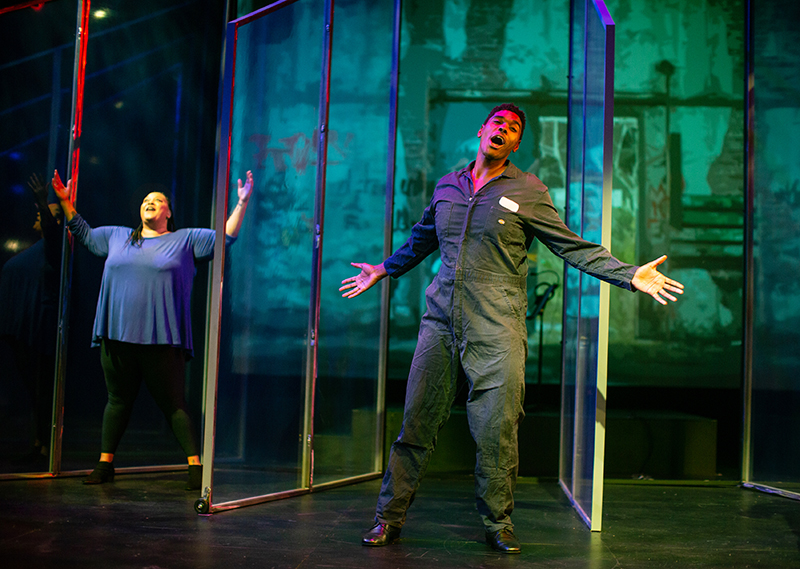
Working with a Rep Hang
The set was finished at the end of the week prior to when the team got on set. With regards to lighting and to address the pandemic situation, the Playhouse created a rep hang. “One of the things that makes theater so expensive is rehanging every light for every designer,” says English. “We just didn’t feel, since we weren’t really going to have a big audience, that we were going to be able to afford that. So the designers [for our current shows] all have to work with a rep hang, which means they can put up four or five different lights, specials, and then they can re-gel.”
Most of the venue’s lighting instruments, including Source Four pars, are infinite color, so it is very easy for LDs to change colors. “Then you get a day with the two electricians to focus,” explains English. “Every instrument we own is in the air, and we have sidelight and backlight. Then we have some trees that are far left and far right, and a front of house position, so it’s over covered. The designers get a rep hang, and they decide what they want to do with it. We do a paper tech where the director and the designers all go through what the cues are going to be just like the regular show. We did a dry tech on this show with just myself and the lighting designer in the space. We went through all the cues and what the look was we wanted for every scene.”
English reports they were constantly giving lighting and sound cues and making adjustments all the way through to the final shoot. “It’s pretty ambitious and requires a great deal of discipline because we just don’t have the money,” he says of how they do shows now. “We don’t have the funds for the standard technical process. Sets all have to be built for $1,000. That’s our budget. Whereas we could [normally] spend $10,000 to $15,000 on the set materials and have two or three extra carpenters and eight electricians, we just had to pare everything back to what we thought we could give a professional looking result, but very, very simple, very stripped down.”
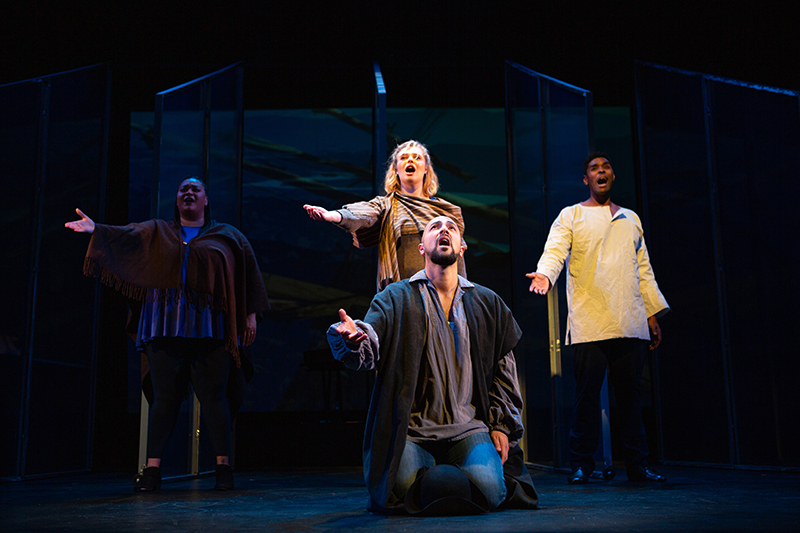
Along with the director and the DP, the crew during video recording included a stage manager (who started the soundtrack), assistant stage manager, costume/props/stagehand person, three camera operators, the video switcher, sound engineer, lighting designer (who ran the lighting show) and video designer (who ran the rear projection screen and slides). The production did not need the third day of shooting because they were satisfied with what they achieved on the first two.
English was very happy with the show and says it exceeded his expectations in some ways. He thought the set projections worked better in how the material picked up light, he was very pleased how the camera angles were integrated to create an American Bandstand type vibe with actors synched to camera movements, and he was proud of how the more tragic, difficult music pieces came off well. He originally thought they might come off lighter than they did.
“I was directing the actors to be real and take their given circumstances very seriously,” he says, “but I was surprised at how well they did that and surprised with how well the drama came across.”


